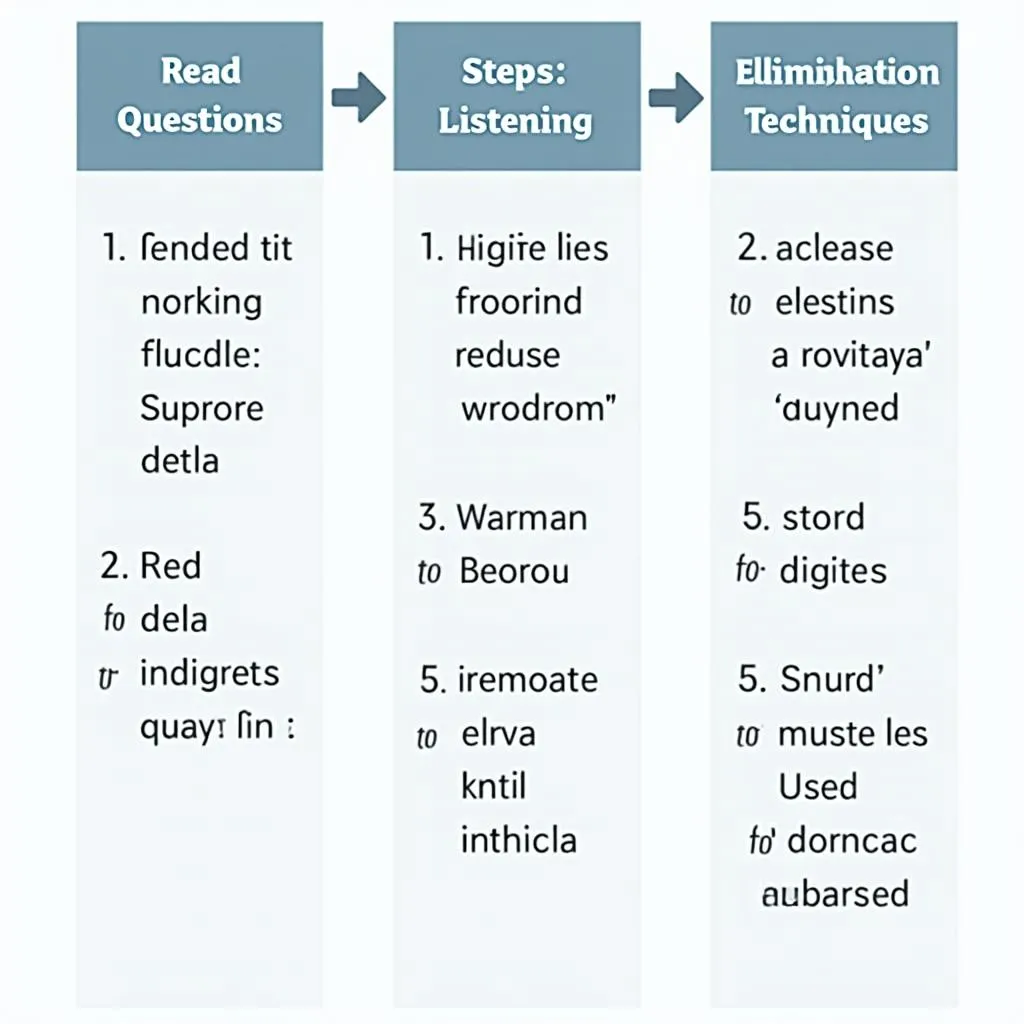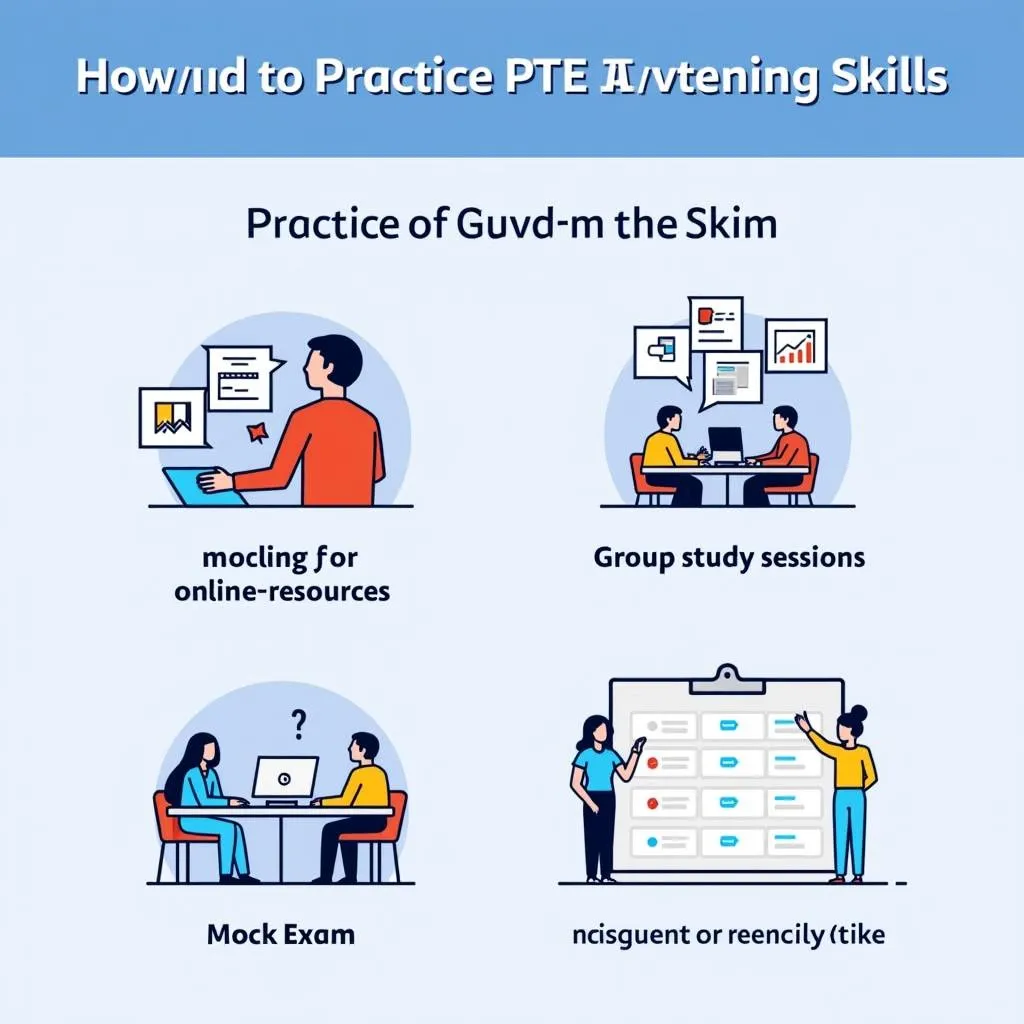Tackling difficult questions in the PTE Listening section can be daunting, but with the right approach, you can boost your confidence and improve your score. This comprehensive guide will walk you through proven strategies to handle challenging questions in PTE listening, helping you navigate even the trickiest parts of the exam with ease.
Understanding the PTE Listening Section
Before diving into specific strategies, it’s crucial to understand the structure and types of questions you’ll encounter in the PTE Listening section. This knowledge forms the foundation for effective preparation and execution during the exam.
Types of Challenging Questions
- Summarize Spoken Text
- Multiple Choice, Multiple Answers
- Fill in the Blanks
- Highlight Correct Summary
- Select Missing Word
- Highlight Incorrect Words
- Write from Dictation
Each of these question types presents unique challenges, but with practice and the right techniques, you can master them all.
General Strategies for PTE Listening Success
Regardless of the question type, some overarching strategies can help you handle challenging questions in PTE listening:
- Active Listening: Engage fully with the audio, anticipating key information and main ideas.
- Note-taking: Develop a personal shorthand system to quickly jot down important points.
- Time Management: Familiarize yourself with the time constraints for each question type and practice accordingly.
- Vocabulary Building: Expand your vocabulary, focusing on academic and topic-specific terms.
- Regular Practice: Consistently expose yourself to various accents and speaking speeds.
 Active listening techniques for PTE exam
Active listening techniques for PTE exam
Specific Strategies for Challenging Question Types
Summarize Spoken Text
This task can be particularly challenging due to its demand for both listening and writing skills. Here’s how to tackle it effectively:
- Focus on the main idea and key supporting points.
- Use your notes to structure a coherent summary.
- Paraphrase the speaker’s words to avoid direct copying.
- Stick to the word limit (50-70 words) while ensuring grammatical accuracy.
“The key to acing Summarize Spoken Text is to capture the essence of the lecture without getting bogged down in details,” says Dr. Emma Thompson, a renowned PTE expert. “Your summary should be a concise, well-structured snapshot of the main argument and its support.”
Multiple Choice, Multiple Answers
This question type often trips up test-takers due to its complexity. Here’s how to approach it:
- Read the question and options before the audio plays.
- Listen for specific details that correspond to the given options.
- Be prepared for more than one correct answer.
- Use the process of elimination for options you’re unsure about.
 Multiple choice strategy for PTE listening
Multiple choice strategy for PTE listening
Fill in the Blanks
This task tests both your listening and spelling skills. To excel:
- Read through the text quickly before the audio begins.
- Focus on the context surrounding the blanks.
- Listen for word forms (singular/plural, verb tense) that fit grammatically.
- Double-check your spelling, especially for commonly confused words.
For more in-depth strategies on handling tricky questions across all PTE sections, check out our guide on how to handle tricky PTE questions.
Highlight Correct Summary
This question type requires you to identify the most accurate summary of the spoken text. To succeed:
- Listen for the overall theme and main points.
- Quickly scan the options as the audio plays.
- Eliminate summaries that contain incorrect information or are too specific/general.
- Choose the option that best captures the main ideas without added details.
Select Missing Word
This challenging task tests your ability to understand context and predict language use. Here’s how to approach it:
- Pay close attention to the speaker’s tone and the topic being discussed.
- Listen for clues that might indicate the direction of the conclusion.
- Consider common phrases or idiomatic expressions that might fit.
- Trust your instinct – often, your first guess based on context is correct.
Highlight Incorrect Words
This task can be tricky as it requires simultaneous reading and listening. To excel:
- Skim the text quickly before the audio begins.
- Focus on one line at a time as you listen.
- Pay attention to small differences, such as singular vs. plural or verb tense changes.
- Don’t second-guess yourself – if a word sounds incorrect, highlight it.
Write from Dictation
This final task in the listening section tests your ability to accurately transcribe spoken sentences. To master it:
- Listen carefully to the entire sentence before writing.
- Pay attention to punctuation cues in the speaker’s intonation.
- Double-check your spelling and capitalization.
- Practice with a variety of accents and speaking speeds.
“Write from Dictation is often underestimated, but it’s a crucial task that tests multiple skills,” notes Professor James Chen, a PTE preparation specialist. “Mastering this can significantly boost your overall score.”
Enhancing Your PTE Listening Skills
To truly excel in handling challenging questions in PTE listening, consider these additional tips:
- Immerse yourself in English: Listen to English podcasts, watch English news, and engage in English conversations regularly.
- Use online resources: Leverage PTE speaking section sample practice materials to familiarize yourself with the exam format and question types.
- Join study groups: Collaborate with other PTE aspirants to share strategies and practice together.
- Simulate exam conditions: Practice under timed conditions to improve your speed and accuracy.
- Analyze your mistakes: Keep a log of questions you find challenging and work on improving those specific areas.
 PTE listening practice techniques
PTE listening practice techniques
Conclusion
Mastering the art of handling challenging questions in PTE listening is a journey that requires dedication, practice, and the right strategies. By understanding the question types, applying specific techniques, and consistently working on your listening skills, you can significantly improve your performance in this crucial section of the PTE Academic exam.
Remember, the key to success lies in regular practice and a positive mindset. Embrace the challenges as opportunities to learn and grow. With persistence and the strategies outlined in this guide, you’ll be well-equipped to tackle even the most difficult questions in the PTE listening section.
For additional support and resources, consider how to use online forums for PTE preparation to connect with fellow test-takers and access valuable tips from experienced candidates.
FAQ
How long should I practice PTE listening each day?
Aim for at least 30-60 minutes of focused listening practice daily. Consistency is key to improving your skills.
Can I improve my PTE listening score in a short time?
While significant improvement takes time, focusing on strategy and targeted practice can lead to noticeable improvements in a few weeks.
What’s the best way to improve my note-taking skills for PTE listening?
Develop a personal shorthand system, practice with various audio materials, and focus on capturing main ideas rather than every detail.
How important is accent familiarity in PTE listening?
Very important. Expose yourself to a variety of English accents through podcasts, news broadcasts, and PTE practice materials to prepare for the exam.
Should I guess if I’m unsure of an answer in PTE listening?
Yes, always provide an answer. There’s no penalty for guessing, and you might be correct.
How can I improve my concentration during long listening tasks?
Practice active listening techniques, take short breaks between practice sessions, and gradually increase the duration of your listening exercises.
Is it helpful to read the transcript after listening practice?
Yes, reviewing transcripts can help you identify missed words or phrases and improve your overall comprehension skills.